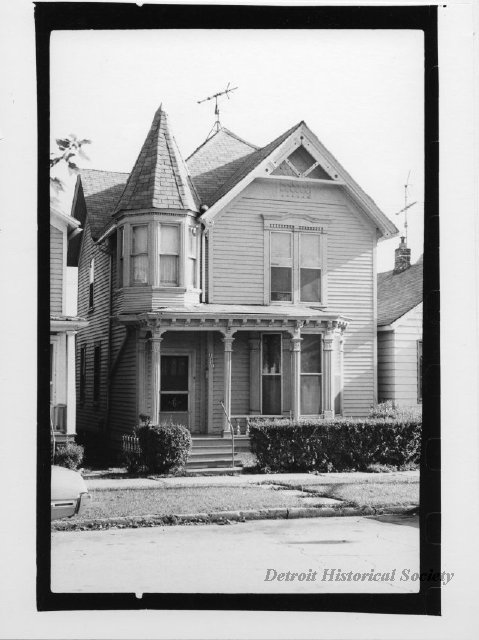Corktown is the oldest existing neighborhood in Detroit, Michigan, though it is only half as old as the city itself. In the 1820s and 30s, with the opening of the Erie Canal and the decreased cost of steamboat travel on the Great Lakes, immigrants began arriving in Detroit in significant numbers and settling downtown. As the number of Irish immigrants fleeing the Great Irish Potato Famine of the 1840s increased, they began to move west of downtown Detroit into the area now known as Corktown, named after County Cork, Ireland. By the early 1850s, half of the residents of the 8th Ward (which contained Corktown) were of Irish descent. Historically, the neighborhood was roughly bounded by Third Street to the east, Grand River Avenue to the north, 12th Street to the west and Jefferson Avenue to the south.
Initially, detached homes and rowhouses in the Federal style were built, a reflection of the architectural fashion of the time. As the area's population grew, modest one and two-story Victorian townhouses with Italianate, Gothic and Queen Anne features joined the earlier buildings. Though by the 1890s an increasingly affluent Irish population was scattering throughout the city, and Corktown became home to other ethnic communities. Around 1900, three men from the island of Malta settled there and a number of their countrymen followed. After World War I, plentiful auto industry jobs brought immigrants in with great numbers - many of them settling in Corktown. In the 1920s, Latino populations arriving from the Southwest and Mexico came to Corktown seeking work in Detroit's auto factories.
Following World War II, city planners proposed demolishing large swaths of the neighborhood for factories. 75 acres of Corktown homes and businesses were demolished and hundreds of residents were displaced in preparation for industrial expansion. The planned industrial development never came to fruition, however, and there were no plans to build new homes in the area. Corktown suffered further in the 1960s, when "urban renewal,” construction of the Lodge Freeway, and business district encroachment swallowed up or flattened dozens of residential blocks. The remaining residential section was listed on the National Register of Historic Places in July of 1978 and is designated as a Historic District of the City of Detroit.
Corktown has seen revitalization since the early 2000s, with many new businesses moving into old spaces. Tiger Stadium, longtime Corktown landmark, was demolished in 2009 and replaced by the Detroit Police Athletic League’s Corner Ballpark. Detroit’s iconic Michigan Central Station, which towers over the neighborhood, was purchased by Ford Motor Company in 2018.

